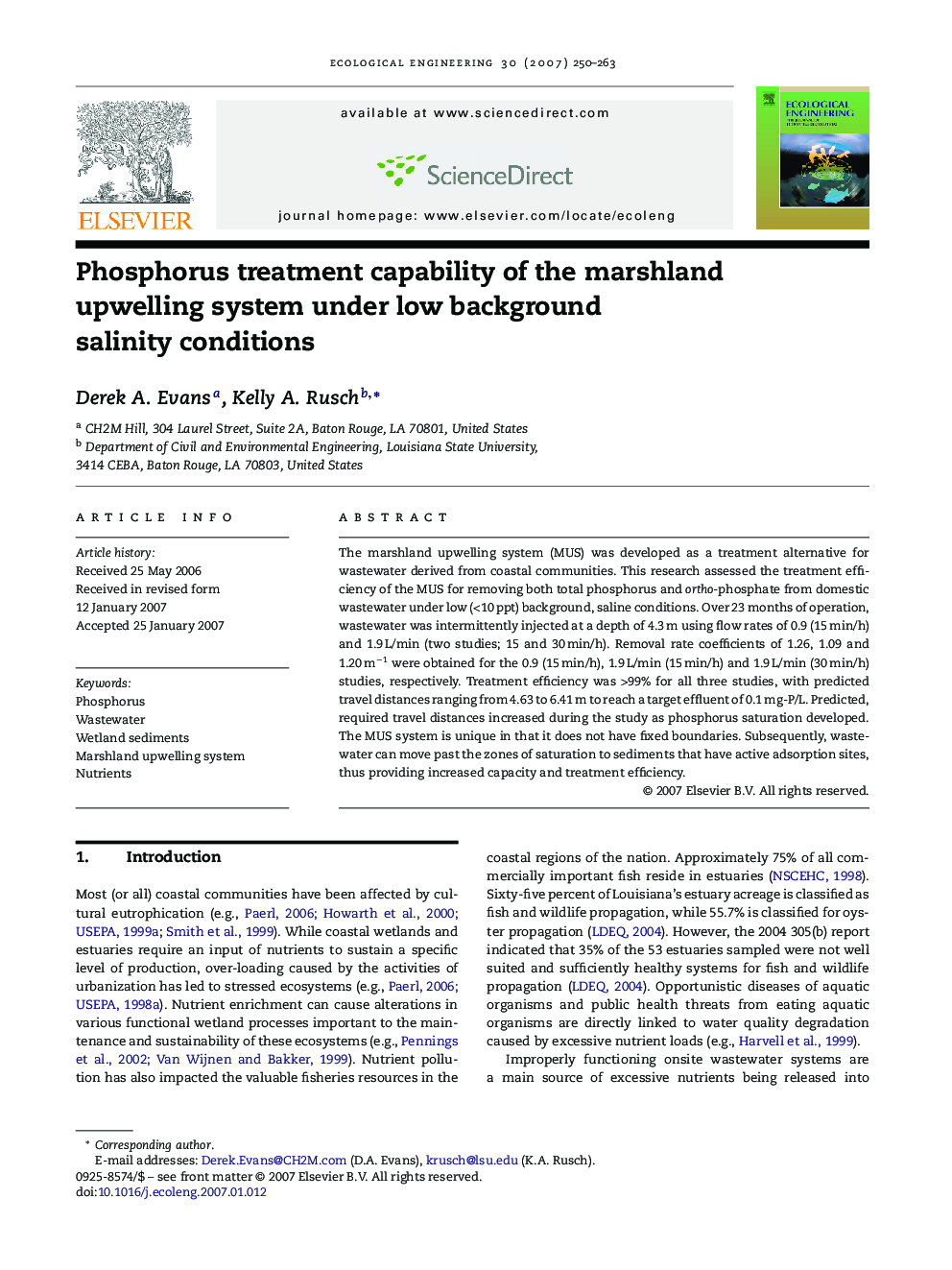| Article ID | Journal | Published Year | Pages | File Type |
|---|---|---|---|---|
| 4391095 | Ecological Engineering | 2007 | 14 Pages |
The marshland upwelling system (MUS) was developed as a treatment alternative for wastewater derived from coastal communities. This research assessed the treatment efficiency of the MUS for removing both total phosphorus and ortho-phosphate from domestic wastewater under low (<10 ppt) background, saline conditions. Over 23 months of operation, wastewater was intermittently injected at a depth of 4.3 m using flow rates of 0.9 (15 min/h) and 1.9 L/min (two studies; 15 and 30 min/h). Removal rate coefficients of 1.26, 1.09 and 1.20 m−1 were obtained for the 0.9 (15 min/h), 1.9 L/min (15 min/h) and 1.9 L/min (30 min/h) studies, respectively. Treatment efficiency was >99% for all three studies, with predicted travel distances ranging from 4.63 to 6.41 m to reach a target effluent of 0.1 mg-P/L. Predicted, required travel distances increased during the study as phosphorus saturation developed. The MUS system is unique in that it does not have fixed boundaries. Subsequently, wastewater can move past the zones of saturation to sediments that have active adsorption sites, thus providing increased capacity and treatment efficiency.
